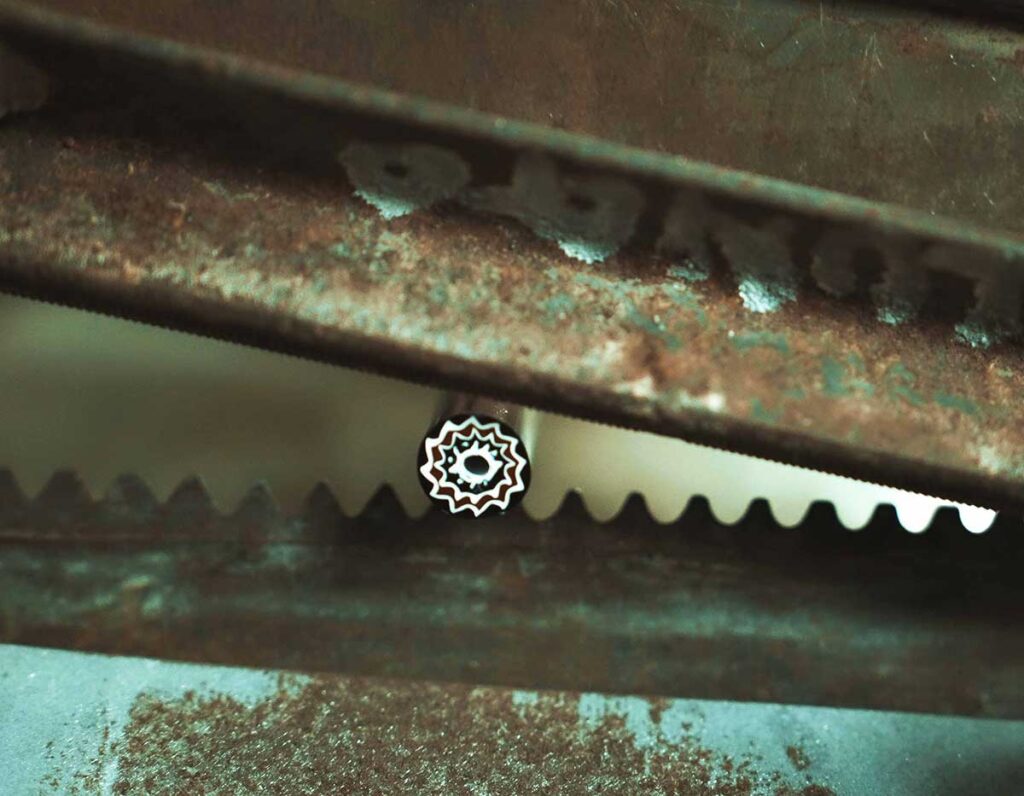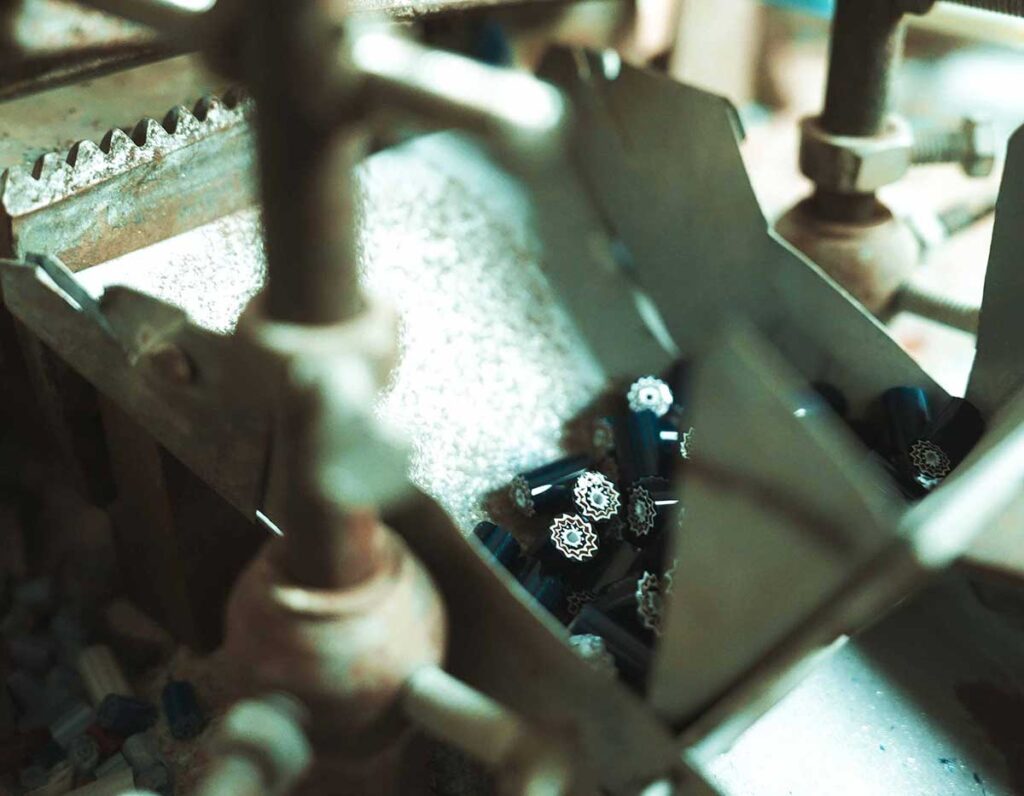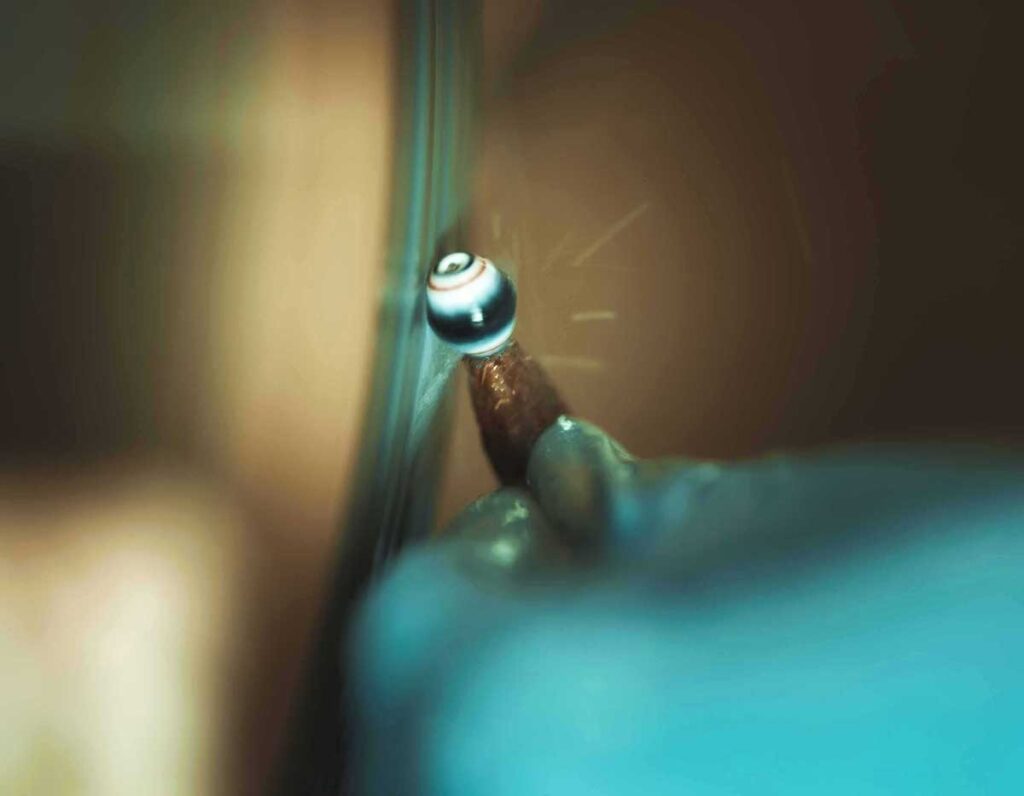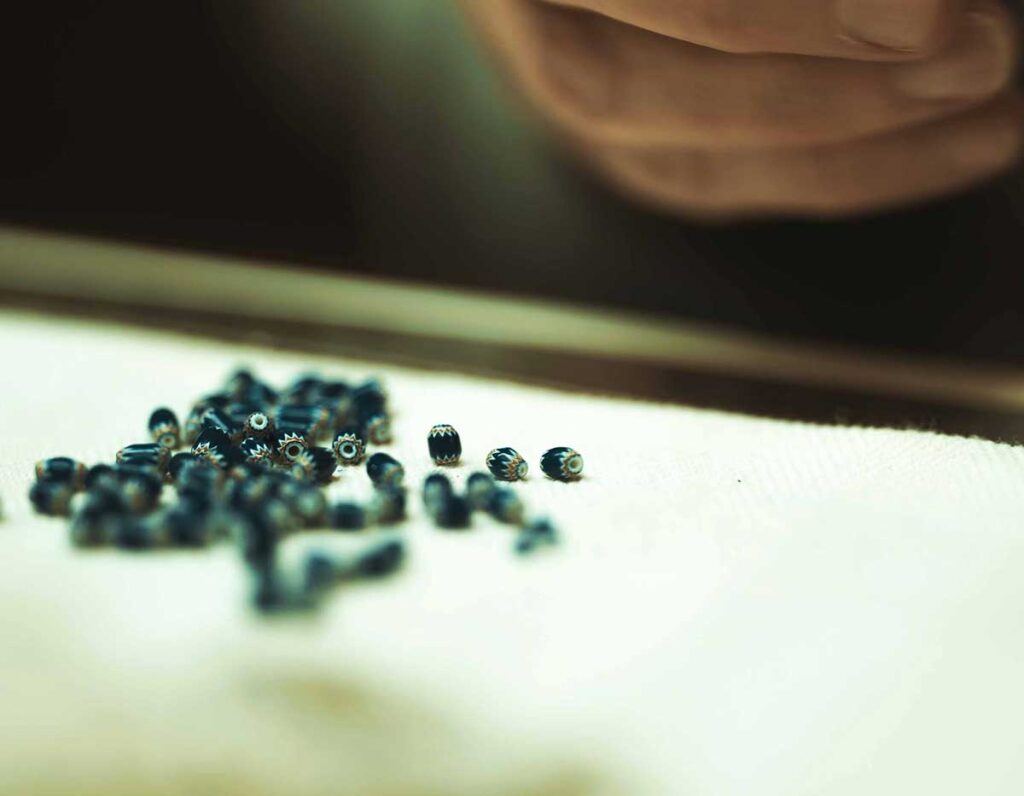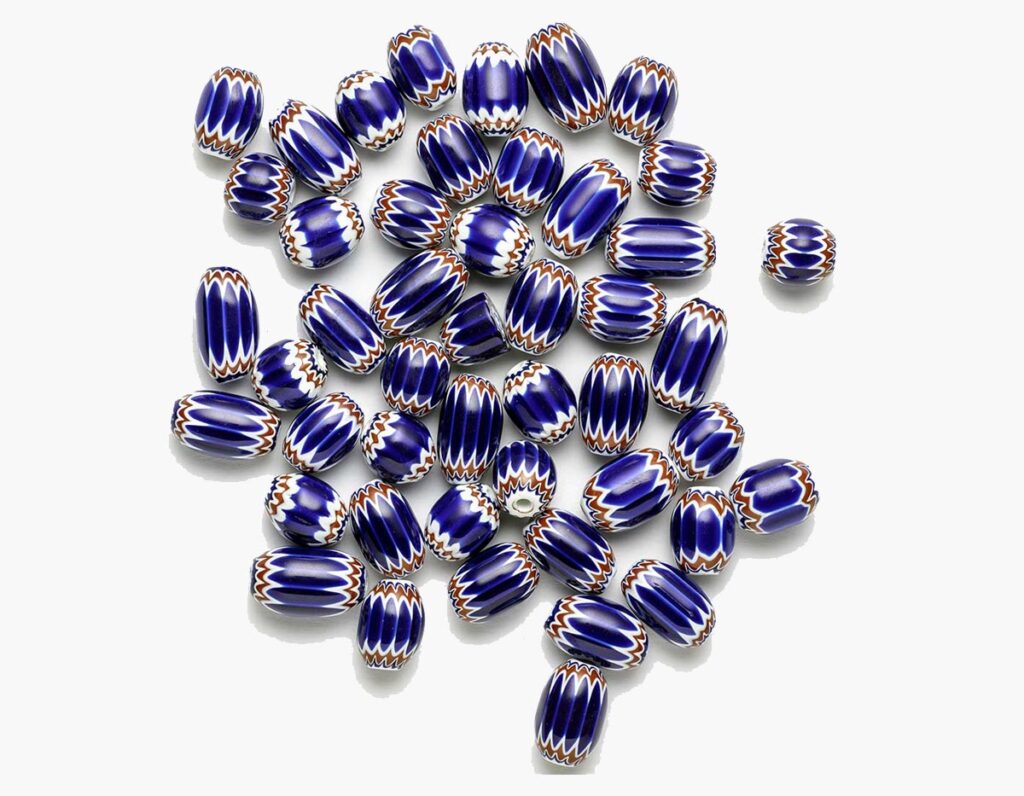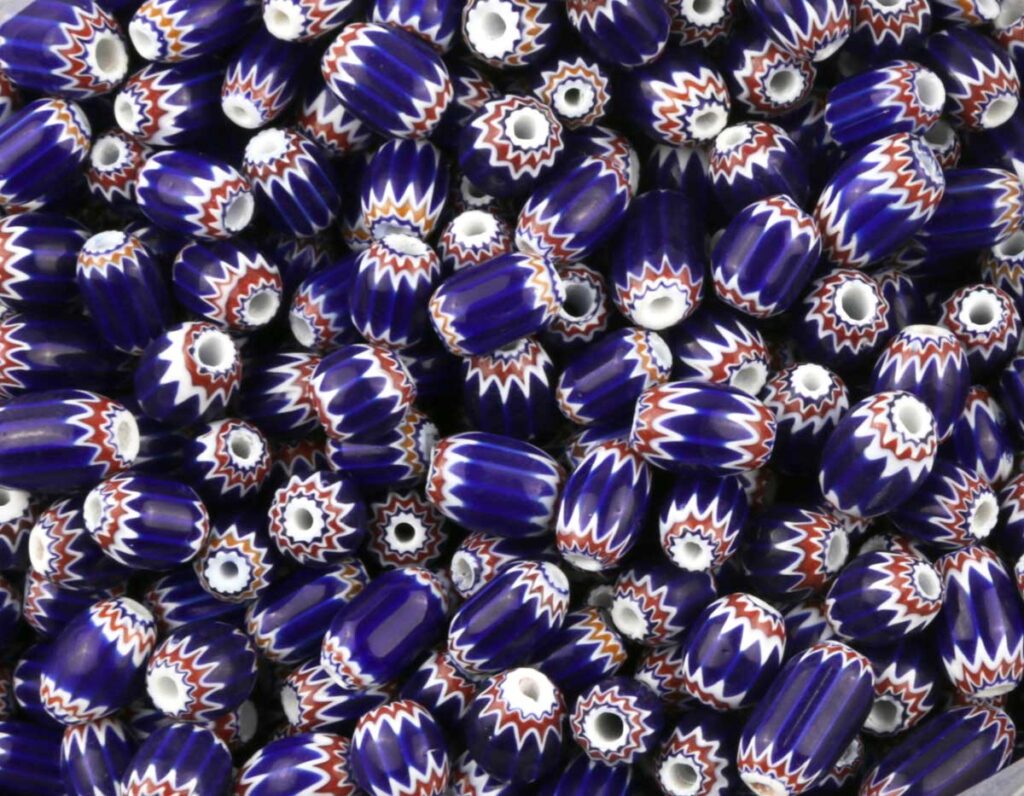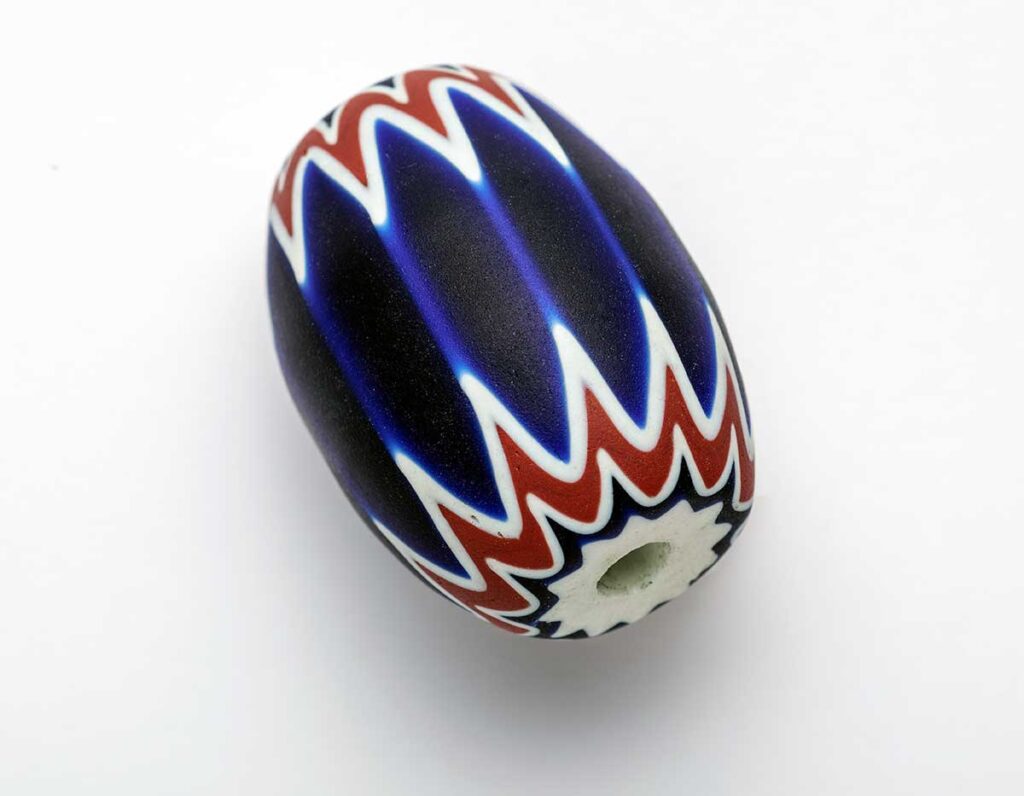The noble Chevron bead
The Chevron bead, the Venetian bead of inestimable prestige, reigns supreme in the world of glass beads for its five-century history and recognized beauty.
Characterized by an oval “barrel” shape and a distinctive star motif with concentric layers, the bead, also known as ‘Rosetta’, boasts a classic color palette: transparent blue, white, and opaque red.
Its fame is so widespread that, according to a 19th-century legend, the island of Manhattan was purchased by the Dutch for $24 worth of Chevron beads and other Venetian items.
Invented in Venice in the 15th century by Marietta Barovier, this bead is distinguished by a twelve-point star design, typically with seven layers in older models, which became six or four in more recent ones.
The Chevron bead was the first Venetian bead to be used as currency, showcasing its importance beyond its beauty.
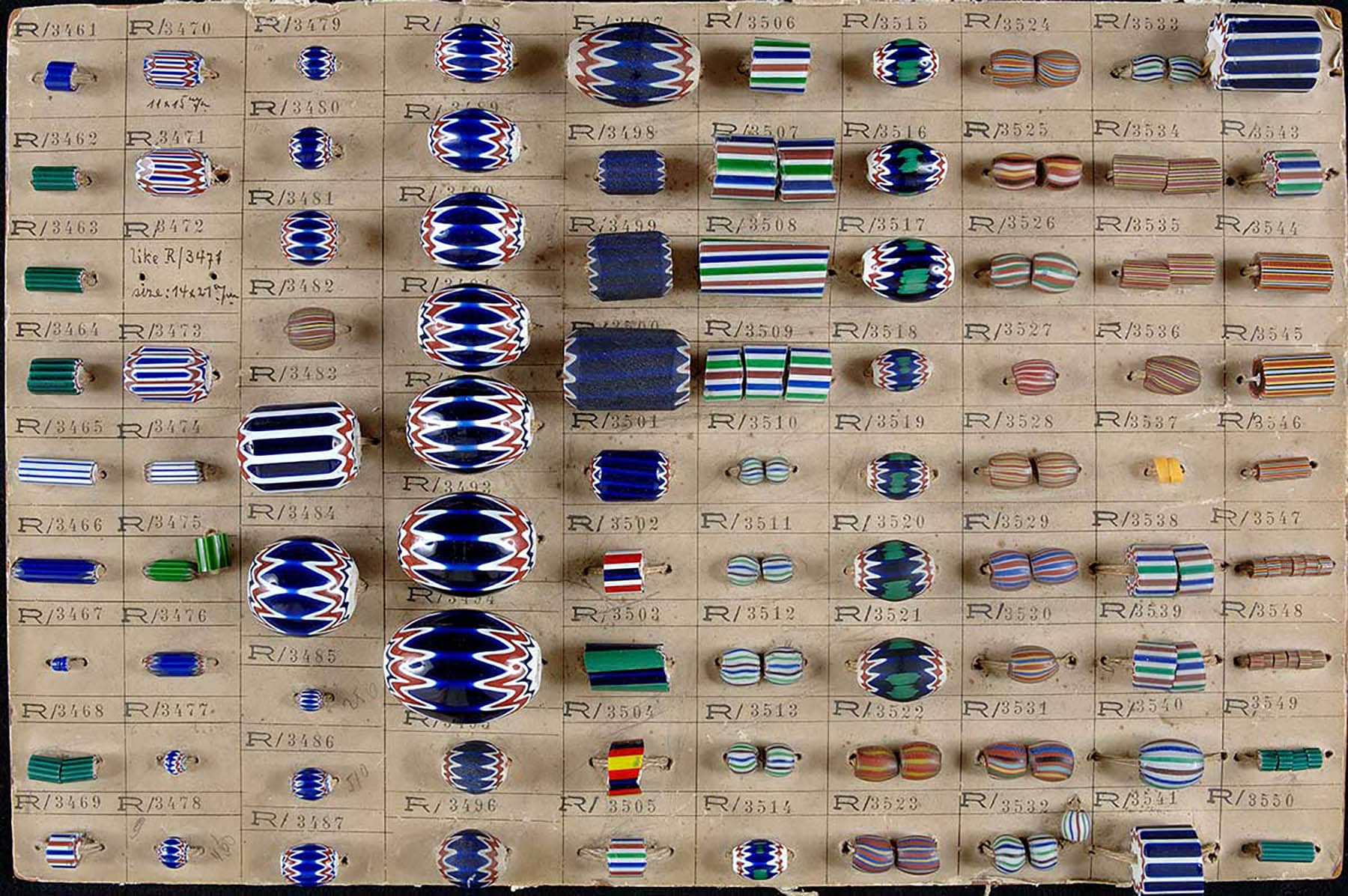
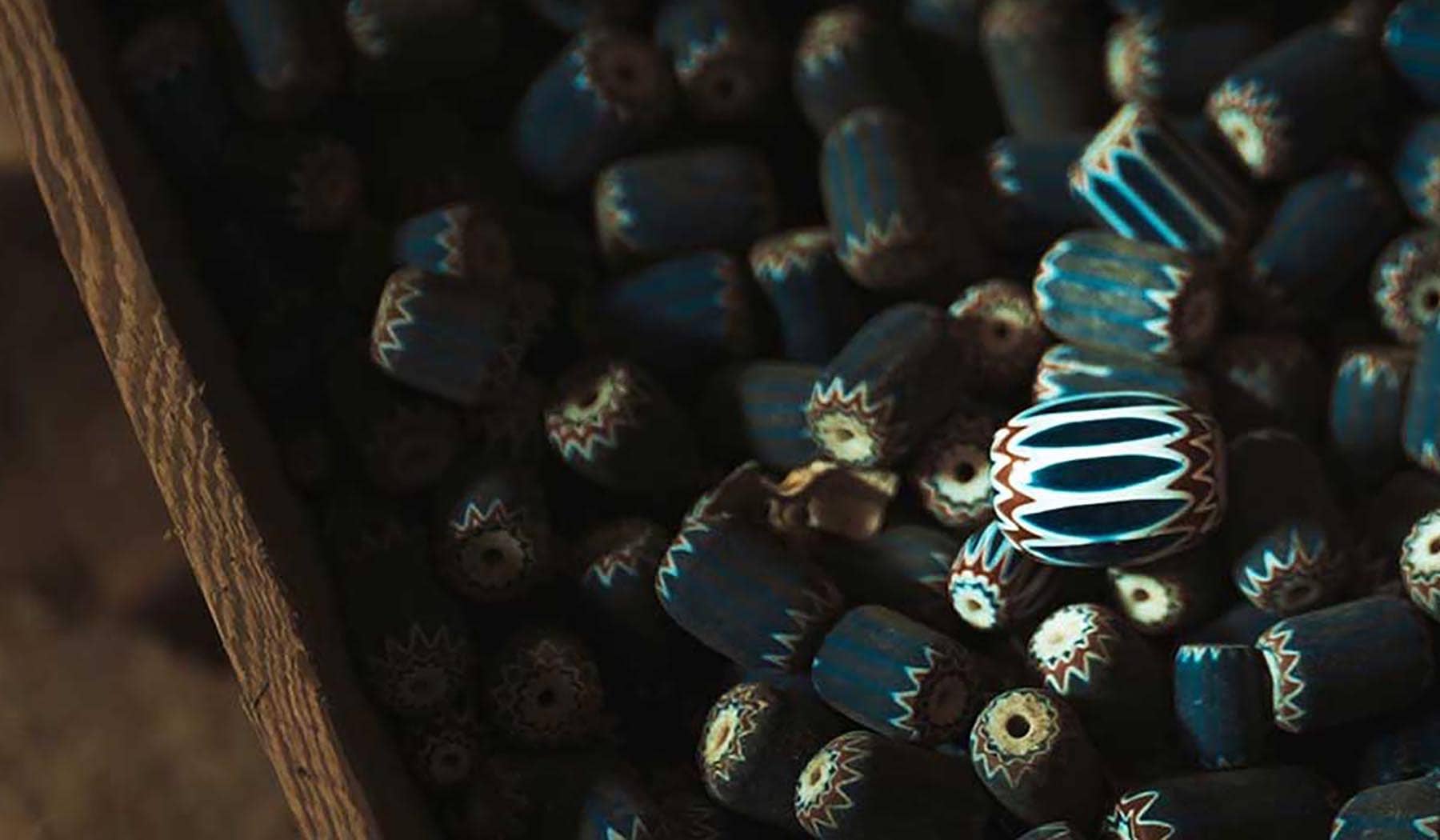
The 12-pointed star
The production of Chevron beads requires a team of four or five people.
The cooled rod reveals the famous star design. The production of the Rosetta requires a team effort of four or five people, beginning with the gathering of white glass to form a cylinder with a hollow center. This cylinder is then dipped into crucibles containing glass of other colors and “stamped” into the shape of a twelve-pointed star. After being pulled to the desired thickness, the cooled cylinder reveals the famous star pattern.
The resulting rod is then cut into small segments. Next comes a grinding phase, where the ends are shaped to resemble small barrels, thus revealing the internal pattern on the exterior as well. Finally, a tumbling and polishing process smooths and brightens the surface.
Beloved all around the world
Rising into a symbol of social status, this bead has been exported worldwide, and was recognized with talismanic properties.
It was even celebrated on Canadian stamps in 2010 to commemorate 400 years of Canadian history, ‘Rosetta’ continues to be a symbol of the connection between Venice and other cultures around the world, carrying with it stories of trade, exploration, and cultural interaction.
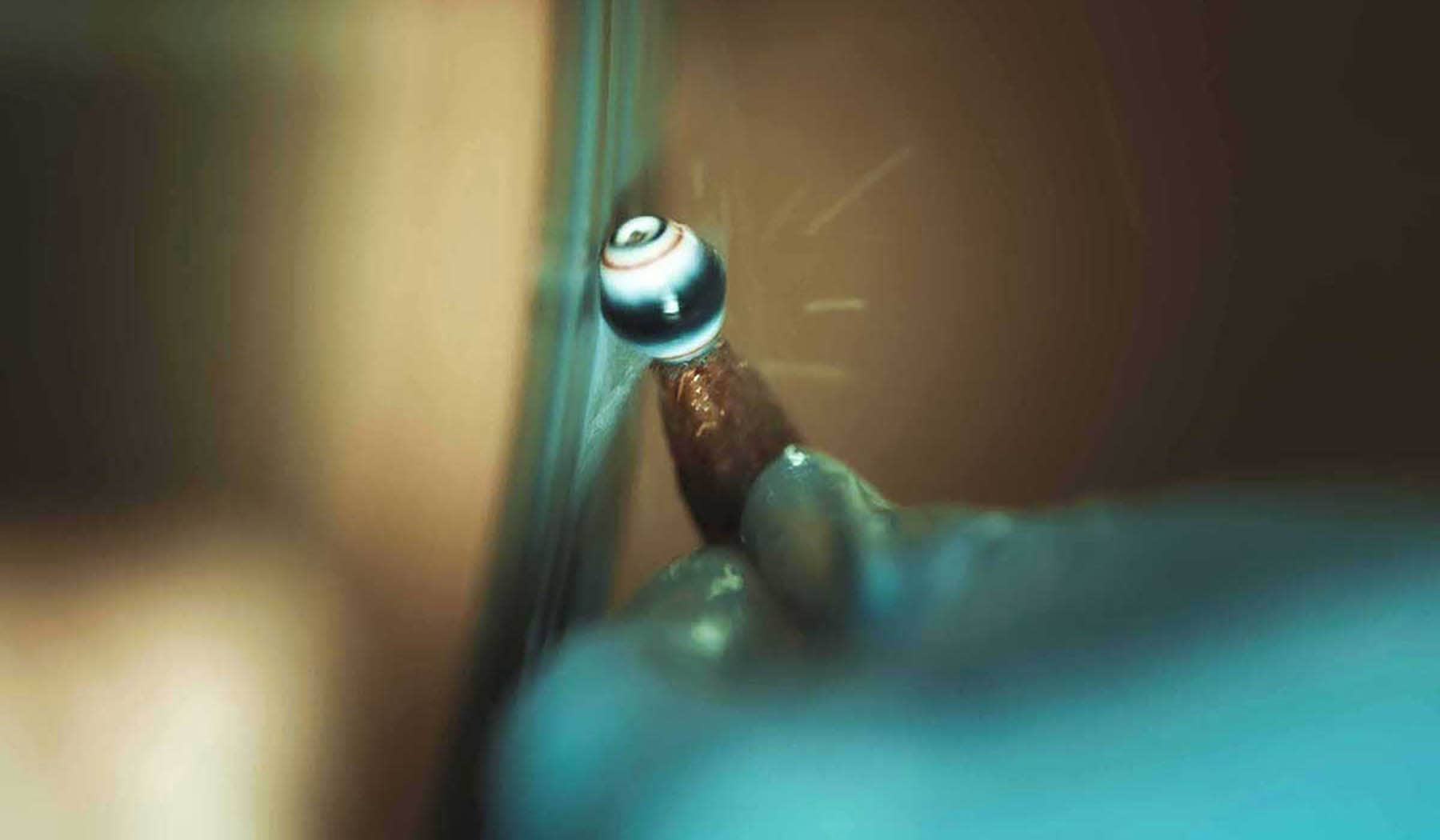
The processing steps
